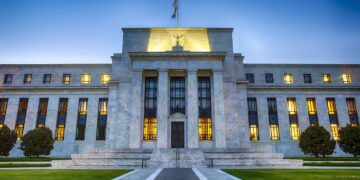The year was 1850. The bustling streets of Pittsburgh were witness to countless stories of hardship, dreams, and survival. Among those threading their narrative into the city’s lore was a young messenger boy named Andrew Carnegie. Earning a meager $2.50 a week, his life was a far cry from the opulence and grandeur he would come to be associated with. But a library, and the beacon of hope it shone, would change the course of his life forever.
The Library that Changed Lives
Colonel Anderson’s library was not just a building with books; for many, it was the gateway to another world. Opened in 1850, its mission was unique. At a time when access to education and literature was limited, especially for the working class, the library aimed to serve “working boys”. However, this noble mission was shrouded in a dispute. The term “working boy” was ambiguous, and young Andrew found himself at odds with the criteria. Undeterred, the future tycoon penned his views in the local paper, emphasizing his right to knowledge. The library, he believed, held the key to a better future.
Books: Windows to New Universes
For Carnegie and his peers, Colonel Anderson’s library was more than just a repository of books. Every page turned unveiled a new idea, a new story, a new vision of what life could be. These books weren’t mere pages bound together; they were lifelines. The boys would immerse themselves in these tales and lessons, using them as shields against bad influences and stepping stones towards a brighter future.
Each book read, every idea absorbed, was another step towards the realization of the American Dream. The vast knowledge available became the cornerstone upon which Carnegie would build his empire.
The Rise of an Empire
Fast forward to 1901, the U.S. economy was a fraction of what it is today. Yet, Andrew Carnegie, the boy who once earned just $2.50 a week, managed to make a staggering $480 million. How did he accomplish this?
Carnegie’s journey to amassing one of history’s most significant fortunes can be traced back to his unquenchable thirst for knowledge. He ventured into various businesses, including railroads, before focusing on steel. His innovations and strategies in the steel industry, such as vertical integration, led to unprecedented efficiencies and profits.
He had the foresight to see the immense potential of steel in America’s future and capitalized on this vision, making Carnegie Steel the largest steel producer in the world. His empire became so valuable that when he sold it to J.P. Morgan in 1901, he received $480 million, an amount equivalent to roughly $17 billion today.
Giving Back: A Testament of Gratitude
Despite his immense success, Carnegie never forgot his roots. The library that had once been his refuge became his inspiration. He understood the power of knowledge and believed that everyone should have access to it. In honor of Colonel Anderson and as a testament to his gratitude, Carnegie financed the establishment of 2,509 public libraries across the U.S., ensuring that future generations would have the same opportunities he had.
For Andrew Carnegie, the journey from a messenger boy to one of the world’s richest men wasn’t just a tale of business acumen. It was a story of grit, determination, and the transformative power of knowledge. The library, and the lessons it housed, became the compass guiding his life, demonstrating that with the right resources, anyone can redefine their destiny.























